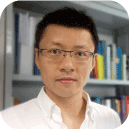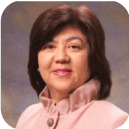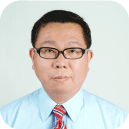
|
|
|
 |
Mr Karl Engkvist Senior Vice President, Business Development,
The Learning Curve and Avalanche Research At a time when the eyes of the world are focused on the emergence of Asian countries (and China in particular) as global economic powers, higher education in the region is more important than ever. Developed economies rely on a flow of highly skilled labour to drive productivity, create more confident and affluent middle classes, and to increase business efficiency. Having a vibrant and high quality higher education system is widely accepted as being a necessary condition of economic growth and national competitiveness. Higher education institutions now operate in a global market and trends in the globalisation of higher education are readily apparent in Asia Pacific. Technology is reshaping teaching and learning across the education sectors and no less so than in higher education. In a report by Sir Michael Barber, Pearson’s Chief Education Advisor, he and his co-authors assess that the next 50 years could turn out to be a golden age for higher education if universities embrace technologies, seize the initiative and act ambitiously. They say: “Ultimately the student will decide which aspect of higher education they wish to prioritise. But in the new world the learner will be in the driver’s seat, with a keen eye trained on value. For institutions, deciding to embrace this new world may turn out to be the only way to avoid the avalanche that is coming.” Be that as it may, the scope to which improved technology is able to impact higher education is always going to be dependent on the wider technological infrastructure of a country and digital readiness of its population. Asia Pacific countries differ greatly in these terms, some being amongst the most technologically advanced in the world, whilst others still exhibit major weakness in terms of Internet penetration rates and personal computer ownership. Asia Pacific institutions are facing the same challenges as their international counterparts. Sir Michael Barber believes that higher education needs radical and urgent transformation. In his Avalanche paper, he cites three fundamental challenges facing systems all round the world:
During his session, Karl Engkvist, Senior Vice President of Business Development for Pearson Asia Pacific, will discuss the importance of ensuring that Asia Pacific’s higher education institutions are fit for purpose, explore the importance of technology in challenging the issues of cost and quality, and examine Sir Michael Barber’s assertions around education for employability, the link between cost and quality, and the changes that need to happen to change the entire learning ecosystem.
Mr Karl Engkvist is the Senior Vice President of Business Development for Pearson Asia Pacific. During the course of a 20-year career in education, Karl has held leadership roles in the test-preparation pioneer, the Princeton Review and at the education technology innovator, Blackboard Inc. At the Princeton Review in the 1990s, he helped to introduce enhanced learning technologies to students preparing for high-stakes tests. While at Blackboard, he worked with universities throughout North America, Europe, and Asia, including three years he spent living in Beijing as COO of a joint venture with a spin-off from China’s Ministry of Education. Unique experiences have included working in Iceland with its Ministry of Education and in Tibet with the regional Ministry. Today he lives in Hong Kong and leads Pearson’s efforts to develop Pearson’s strategy for the region, in particular in the fast moving segments of next generation learning technologies. He graduated from Dartmouth College with a degree in Russian History. |
|
|
|
||
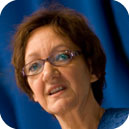 |
Professor Diana Laurillard Professor of Learning with Digital Technologies, Institute of Education, University of London, London, UK
Teaching as a design science*: Designing and assessing the effectiveness of the pedagogy in learning technologies Pedagogic innovation is increasingly important as we try to respond to an economic, social, cultural, and technological environment that changes almost too quickly for our education systems to keep pace. Teachers have to negotiate responsive curricula that will not date by the time their students have graduated, and have to teach in a way that enables more students to attain high level learning outcomes. To achieve this professional miracle we will need to change the nature of our professional activity, and will need technology to assist us. First, we have to recognise that teaching is a ‘design science’, that uses what we know about teaching and learning, and takes an iterative approach to discovering and testing how to make it optimally effective. Second, we have to exploit to the full capabilities of digital technology if we are to achieve this difficult task of producing larger scale and higher quality learning. Third, it will be essential to exploit the ‘learning analytics’ capabilities of technology to record and analyse the changes in student performance so that we can test the effectiveness of the different pedagogies we design. The presentation will discuss tools to assist teachers in characterising pedagogy and assessment as it is represented in learning technologies of different types.
* See Diana Laurillard (2012). Teaching as a Design Science: Building Pedagogical Patterns for Learning and Technology, Routledge, New York.
Professor Diana Laurillard is the Professor of Learning with Digital Technologies at the London Knowledge Lab, Institute of Education, University of London. She is leading research projects on developing learning design tools for teachers and trainers, and on software interventions for adult learners with low numeracy and dyscalculia. She is also Assistant Director for Open Mode learning at the Institute of Education, and is Vice Chair of the Association for Learning Technology (ALT). Previous roles include: Head of the e-Learning Strategy Unit at the Department for Education and Skills, where she developed the first cross-sector e-learning strategy on ‘Harnessing Technology’; Pro-Vice-Chancellor for learning technologies and teaching at The Open University; the Visiting Committee on IT at Harvard University; Royal Society Working Group on Educational Neuroscience. She is on the Boards of the ALT, the E-Learning Foundation, and the UNESCO Institute for IT in Education in Moscow. Her most recent book is Teaching as a Design Science: Building Pedagogical Patterns for Learning and Technology, Routledge, 2012. |
|
|
|
||
 |
Dr Mark Pegrum Associate Professor, Faculty of Education,
Mobile outcomes: Improving Language and Literacy across Asia We will begin by exploring both the affordability and affordances of mobile technologies for the teaching and learning of language and literacy, and look at the kinds of learning contexts where mobile devices can play a role. We will go on to consider the learning outcomes achieved with mobile devices. Assessment and feedback can both be enhanced by mobile devices. However, while there is considerable promise for the recording, monitoring and evaluation of learning in mobile projects, and especially for the deployment of learning analytics, this promise is often unrealised for a variety of practical and pedagogical reasons. On the one hand, we need to seek more hard data on improved learning outcomes in mobile projects; and on the other hand, we may need to consider the notion of outcomes more broadly. We will conclude by looking at a number of mini-case studies of mobile language and literacy interventions from across Asia, asking in each case what evidence we can see of improved outcomes, and what we can learn for future projects.
Dr Mark Pegrum is an Associate Professor in the Faculty of Education at The University of Western Australia, where he teaches in the areas of e-learning and mobile learning. His current research focuses on digital literacies, and the learning of language and literacy through mobile technologies. His recent books include “Brave New Classrooms: Democratic Education and the Internet”, co-edited with Joe Lockard, and published by Peter Lang in 2007; “From Blogs to Bombs: The Future of Digital Technologies in Education”, published by UWA Publishing in 2009; and “Digital Literacies”, co-authored with Gavin Dudeney and Nicky Hockly, and published by Pearson in 2013. He is now working on a new book on mobile language learning. He currently teaches in Perth, Hong Kong and Singapore and has given presentations and run seminars on e-learning in Australia and New Zealand, East and Southeast Asia, and the UK and Europe. |
|
|
|
||
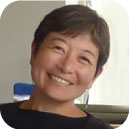 |
Dr Kathy Takayama Director, Sheridan Centre for Teaching and Learning,
Integrative paths in the social construction of understanding The paths of the traditional curriculum do not map the processes through which students develop skills for lifelong learning and critical engagement. Professors acculturate to discipline-based practices and their epistemological frameworks are inevitably reflective of the academic norms of their disciplinary cultures1. As such the reduction of academic aims to discipline-focused outcomes diminishes the development of students’ adaptive expertise necessary to negotiate a continually evolving landscape – what Laurillard highlights as the personal dispositions that embrace “being” as a core developmental process in the curriculum2. This presentation explores how technology-enhanced learning should be integrated to foster iterative, reflective opportunities for deep understanding and interdisciplinary thinking. Situating learning technologies into our understanding of the science of learning3 is essential for fostering preparedness of mind throughout the academic trajectory. The social construction of knowledge and understanding is a critically important consideration as we explore the power of learning communities and the choices students make in creating their learning environments.
1 D. Reichard & K. Takayama. Exploring student learning in unfamiliar territory: A humanist and a scientist compare notes, in The Scholarship of Teaching and Learning In and Across the Disciplines, K. McKinney (ed.), Bloomington: Indiana University Press, 2012.
Dr Kathy Takayama is the Director of the Sheridan Center for Teaching & Learning and Adjunct Associate Professor in the Department of Molecular Biology, Cell Biology and Biochemistry, Brown University. Dr Takayama has led an active research program in science education, the scholarship of teaching and learning and visualizations and learning in the sciences. In addition to directing the Center, Dr Takayama also directs the Departmental Faculty Peer Observations of Teaching Program, as well as the Junior Faculty Teaching Fellows Program, and continues to facilitate workshops for the Center. Dr Takayama is a Carnegie Scholar and a founding member of the International Society for the Scholarship of Teaching and Learning (ISSOTL). She served as the first Regional Vice President (Australasia) of the Society (2005-07) and chaired the 4th ISSOTL Conference in Sydney. She also serves on the Editorial Board of the International Journal of the Scholarship of Teaching and Learning, and is Research Editor of the Journal of Microbiology and Biology Education. She has recently co-authored a book chapter with historian David Reichard entitled “Exploring Student Learning in Unfamiliar Territory: A Humanist and a Scientist Compare Notes.” (Newly published book: The Scholarship of Teaching and Learning in and Across the Disciplines, in which the chapter appears.) |
|
|
|
||


